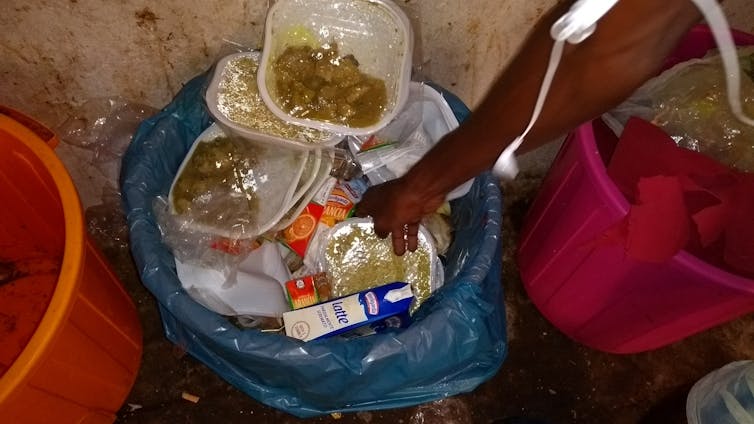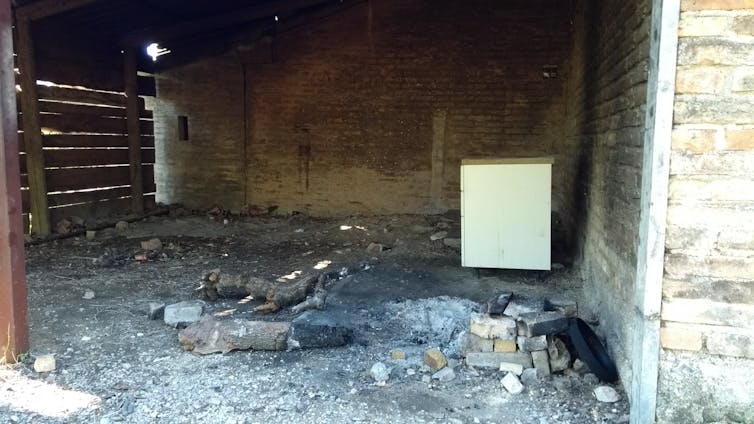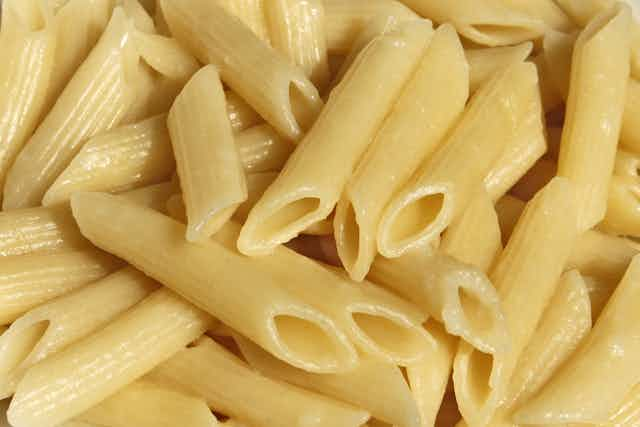Elias, who arrived in Italy from West Africa after a long journey, eats pasta every day for lunch and dinner. And, he claims, for breakfast too. He’s been doing so for nine months, since he first set foot in the small town in central Italy where he now lives.
His journey was similar to that undertaken by the about 1,000 officially registered asylum seekers in the Macerata province of Italy. His dinghy left Libya and was intercepted at sea by a military vessel. He was taken to Sicily, fingerprinted and after a few days taken north, on a bus, to a highway exit. There he was picked up by a member of a non-governmental organisation (NGO) and taken to a hotel hosting over 100 asylum seekers who are waiting for their claim for refugee status to be assessed.
Elias – whose name has been changed here to protect his anonymity – told me about his diet during a 40-minute long rant. I had given him my phone number the day before when I visited the hotel and that morning he summoned me over WhatsApp, peremptorily, with something important to say. He told me he had been living in the hotel for over nine months, and that he was fed up. There are many reasons for this, all of which punctuated his angry narrative.
The most unbearable thing, however, was having to eat pasta every day. “Pasta – Bianco – Pasta – Bianco – Pasta – Bianco, every day, only pasta.” Bianco is the name given in Italy to “white” plates of pasta, without tomato sauce.
“What about chicken?”, I asked. “Yes, sometimes we get that. But always pasta, pasta pasta”. He said the word pasta, obsessively, over a hundred times. “Basta pasta,” he said – enough pasta.
A culinary power balance
As I came to learn over the next few weeks carrying out research in Italy, food is a crucial dimension for understanding the reception system set up for asylum seekers.
As in all humanitarian situations, there are strict guidelines concerning its provision. The Prefettura, a decentralised office of Italy’s interior ministry, clearly details the diet that each asylum seeker should get. In its public tender document, which regulates the activities of NGO contractors, it states that for breakfast, “one hot drink, some crackers, butter, jam, or some biscuits”, should be served. For lunch and dinner, it details pasta, rice or couscous – the volume of which depends on the sauce or vegetables it is served with. It says this should be followed by meat, or eggs and cheese, and accompanied by a side of vegetables. Fruit and bread are also on the menu – and the occasional dessert.

In my visits to reception centres, including hotels, houses and apartments scattered across the province, I seldom saw this menu followed. And I met many people who wanted me to take note of what they felt was very poor rations.
Food has become a real flashpoint in the power dynamics between asylum seekers and the people charged with looking after them. It has provoked protests, marches and road blockages. Asylum seekers refuse it on a daily basis. I was shown entire portions that had been thrown away, or kept in the fridge for when there was really nothing else to eat (or it could be spiced up with something else).
Each asylum seeker receives an allowance of €75 a month, distributed by NGOs. If any is left after buying credit for a simcard, clothes and bus fares, some use it to buy extra food at Indian or African shops, or at Eurospin, the local discount supermarket. But in the hotel reception centres, they must hide it under the bed as bringing in any food staples is forbidden. Some asylum seekers find places to cook in makeshift BBQs or dirty kitchens.

Food is also an important source of income for hotels, local restaurants and regional catering companies, who have found important new revenue streams in asylum reception funding that comes, via NGOS, from Italy and the European Union. This is much-needed revenue given Italy’s economic crisis and a decline in tourism following recent earthquakes.
Behave the Italian way
Activities that are generally taken to be signs of integration, such as volunteering, are encouraged by the interior ministry and can be taken into consideration when asylum requests are processed. Food is a central part of this system that privileges docile migrants and which rewards their “positive signs of integration”. This means saying ciao or buongiorno to Italians in an appropriate manner. Not making any trouble. And eating pasta – as all Italians are expected to do.
“Well, you know, it is normal that they are unhappy about food,” one NGO worker told me. “Even us Italians, when we go abroad, after a few days we want some pasta.” Even this rare acknowledgement that asylum seekers’ complaints are justified is framed in terms of cultural assimilation: they are right to be upset because they are behaving as Italians would.
There has been little self-reflection in Italy about the significance and implications of the arrival of over half a million migrants since 2011. To me, the current “European migration crisis” is the latest episode in an historical process of mutual, but unequal, entanglement that began centuries ago at the time of colonial expansion by European states. But most Italians probably wouldn’t see it that way. They have yet to learn that it is possible to gaze at Italy and Europe through the eyes of newcomers and to say: “Basta pasta.”

